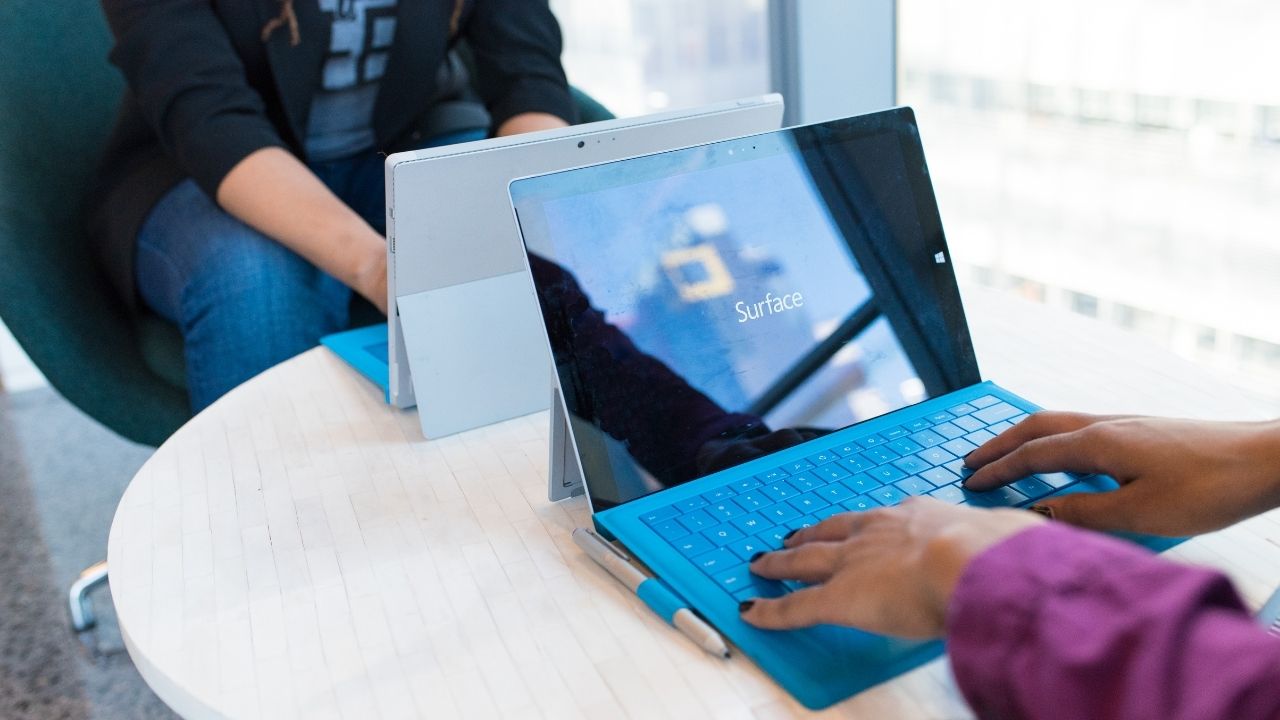
In today's rapidly evolving digital landscape, fostering a collaborative and knowledge-sharing environment is crucial for organizations and individuals alike.
This article explores the top 10 tools that can enhance a learn together environment, empowering individuals to freely exchange ideas, collaborate on projects, and collectively expand their knowledge.
From interactive whiteboards and collaborative software to virtual reality tools and gamification software, these expert-approved tools provide the freedom and flexibility to cultivate collective learning and maximize productivity in any setting.
Interactive Whiteboards
Interactive whiteboards are an essential tool for fostering collaborative learning environments. These innovative devices enable interactive activities that promote student engagement and active participation in the classroom.
By combining the traditional whiteboard with digital technology, interactive whiteboards provide a dynamic and interactive learning experience. Teachers can use these boards to display multimedia content, such as videos, images, and interactive presentations, which enhance the learning process and capture students' attention.
Moreover, interactive whiteboards allow students to actively engage in the learning process by allowing them to write, draw, and interact with the content displayed on the board. This hands-on approach encourages students to take ownership of their learning and facilitates peer collaboration.
The use of interactive whiteboards not only enhances student engagement but also promotes a more inclusive and interactive classroom environment.

Collaborative Software
Collaborative software is a valuable tool for promoting active learning and fostering a sense of collaboration among students. In today's remote working era, collaborative software has become even more important as it allows students to work together on projects and assignments, regardless of their physical location.
This provides several advantages for remote working, such as the ability to collaborate in real-time, share resources, and communicate effectively. Collaborative software also supports various collaborative learning strategies, such as group discussions, peer feedback, and co-creation of knowledge.
It allows students to engage in meaningful interactions, exchange ideas, and learn from each other's perspectives. By using collaborative software, students can enhance their problem-solving skills, develop critical thinking abilities, and improve their overall learning experience.
Video conferencing tools have become increasingly popular in today's digital age, offering numerous benefits for remote collaboration and enhancing the virtual learning experience. These tools provide a platform for face-to-face communication, allowing participants to connect and collaborate regardless of their physical location.
Benefits of Video Conferencing
One effective means of fostering a cohesive and engaging learning environment is to utilize the advantages offered by video conferencing tools. Video conferencing has become an invaluable tool in the realm of education, with numerous benefits and a significant impact on collaboration.
The benefits of video conferencing in a learning environment include:
- Enhanced communication: Video conferencing allows students and instructors to interact in real-time, facilitating discussions and promoting active participation. It enables face-to-face communication, regardless of geographical location.
- Increased accessibility: Video conferencing eliminates the barriers of distance and travel costs, making education more accessible to students in remote areas or with physical limitations.
- Collaborative learning opportunities: Video conferencing enables students to collaborate on projects and assignments, fostering teamwork and the exchange of ideas.
Remote Collaboration Made Easy
With the rise of remote work and distance learning, the use of video conferencing tools has become essential for facilitating seamless collaboration among individuals in different locations.

These tools enable remote brainstorming and virtual team building, allowing teams to work together as if they were in the same room. Video conferencing platforms such as Zoom, Microsoft Teams, and Google Meet offer features like screen sharing, chat, and breakout rooms, which enhance communication and collaboration.
Remote brainstorming sessions can be conducted through video calls, where participants can share ideas and collaborate in real-time. Virtual team building activities, such as icebreakers and team challenges, can also be organized using video conferencing tools.
These tools have revolutionized remote collaboration, making it easy for teams to stay connected and work together effectively, regardless of their physical location.
Enhancing Virtual Learning Experience
To enhance the virtual learning experience, it is imperative to utilize video conferencing tools that facilitate seamless communication and collaboration among remote learners. These tools not only enable real-time interaction but also provide a platform for engaging online activities.
Here are three video conferencing tools that can enhance the virtual learning experience:
- Zoom: With its user-friendly interface and features like screen sharing and breakout rooms, Zoom allows educators to conduct interactive virtual classes and engage students effectively.
- Microsoft Teams: This tool offers a comprehensive virtual collaboration platform that includes video conferencing, document sharing, and chat features. It allows for seamless integration with other Microsoft tools, enhancing productivity for both educators and learners.
- Google Meet: Integrated with Google Classroom, Google Meet provides an easy-to-use video conferencing solution for virtual classrooms. It offers features like live captions and screen sharing, enabling educators to deliver engaging and interactive lessons.
Digital Bulletin Boards
Digital bulletin boards serve as an interactive platform for sharing information and fostering collaboration within a learn together environment. These virtual boards provide a space where learners can post and access a variety of content, including text, images, videos, and links.
Digital bulletin boards enhance communication and engagement by allowing students to share their thoughts, ideas, and resources with their peers. They also serve as a repository for class announcements, assignments, and resources, ensuring that all learners have easy access to important information.

Additionally, digital bulletin boards can be used for showcasing and discussing student work, acting as digital portfolios that highlight their progress and achievements. These boards can also integrate with online forums, creating a seamless learning experience where learners can engage in discussions and provide feedback to their peers.
Document sharing platforms are essential tools for enhancing collaboration and knowledge sharing in a learn together environment. These platforms provide a centralized space for users to upload, store, and collaborate on documents in real-time.
They offer features such as version control, commenting, and editing, allowing multiple users to work on the same document simultaneously, thus fostering a more efficient and effective collaborative learning experience.
One of the most effective platforms for sharing and collaborating on documents is through the use of a robust and user-friendly document sharing platform. When looking for the best document sharing platform, it is important to consider the following document collaboration features:
- Real-time editing: The platform should allow multiple users to edit a document simultaneously, ensuring efficient collaboration and saving time.
- Version control: It should provide a clear version history, allowing users to track changes and revert to previous versions if needed.
- Commenting and feedback: The platform should enable users to leave comments and provide feedback directly on the document, fostering communication and collaboration.
Some popular document sharing platforms that offer these features include:
- Google Docs: A widely used platform that provides real-time editing, version control, and commenting features.
- Microsoft OneDrive: Offers seamless integration with Microsoft Office suite, allowing for easy collaboration and document sharing.
- Dropbox Paper: Combines document creation and collaboration features, providing a user-friendly interface for team collaboration.
These platforms empower individuals and teams to work together, share knowledge, and enhance productivity in a learn together environment.
Collaborative Features for Documents?
A robust document sharing platform offers a wide range of collaborative features that enhance communication and productivity in a learn together environment.

Collaborative editing is a key feature that allows multiple users to work on the same document simultaneously. This real-time collaboration enables learners to actively engage with each other, share ideas, and make suggestions in a collaborative manner. With the ability to see changes in real-time, learners can easily track the progress of their peers and provide feedback instantly.
Additionally, document sharing platforms often provide commenting and annotation features, allowing learners to leave comments, ask questions, and provide feedback directly on the document. These collaborative features foster a sense of community and promote active participation, ultimately enhancing the collective knowledge and learning experience.
Online Quizzes and Polls
The utilization of online quizzes and polls significantly enhances the collaborative learning environment by fostering active participation and knowledge acquisition. These interactive tools offer a range of benefits that encourage engagement and facilitate effective learning.
Here are three key advantages of incorporating online quizzes and interactive polls into a learn together environment:
- Immediate feedback: Online quizzes provide instant feedback to learners, allowing them to assess their understanding of the material in real-time. This immediate feedback promotes self-reflection and enables learners to identify areas where they may need further study or clarification.
- Active participation: Online quizzes and interactive polls encourage active participation by requiring learners to actively engage with the content. This active involvement enhances the learning experience and promotes a deeper understanding of the material.
- Collaboration and discussion: Online quizzes and polls can be designed to foster collaboration and discussion among learners. By incorporating features such as group quizzes or shared poll results, learners can exchange ideas, compare answers, and engage in meaningful discussions, further enhancing their collective knowledge.
Project management tools play a crucial role in enhancing the collaborative learning environment by providing effective organization and coordination for group projects. These tools facilitate project scheduling and task management, allowing teams to efficiently allocate resources, set deadlines, and track progress.
By centralizing project-related information and providing real-time updates, project management tools enable team members to stay on the same page and collaborate seamlessly. With features like task assignment, progress tracking, and milestone tracking, these tools streamline project workflows and ensure that everyone is accountable for their assigned tasks.
Additionally, project management tools often include communication features such as chat and file sharing, further promoting collaboration and knowledge sharing within the team.

Social media platforms have a significant impact on collaboration in a learn together environment. They provide opportunities for real-time communication and sharing of ideas, fostering a sense of community and collective knowledge building.
However, privacy and security concerns must be addressed to ensure the safe and responsible use of these platforms for educational purposes.
Impact on Collaboration
Collaboration is significantly impacted by the integration of social media platforms. These platforms provide a range of benefits that enhance communication and foster creativity in a learn together environment. Here are three ways in which social media platforms impact collaboration:
- Enhanced communication: Social media platforms offer real-time communication tools such as messaging and video conferencing, enabling seamless and instant communication among team members. This improves collaboration by facilitating quick and efficient information sharing, brainstorming, and problem-solving.
- Increased access to diverse perspectives: Social media platforms allow individuals from different backgrounds and locations to connect and collaborate. This diversity of perspectives leads to a more holistic approach to problem-solving, as it encourages the exploration of various ideas and solutions.
- Encouragement of creativity and innovation: Social media platforms provide a space for individuals to share and showcase their ideas, projects, and innovations. This creates an environment that fosters creativity and inspires others to think outside the box, leading to innovative collaborations and solutions.
Privacy and Security Concerns?
The integration of social media platforms in a learn together environment raises important questions regarding privacy and security. While these platforms offer convenient ways to connect and collaborate, they also come with inherent risks.
Privacy concerns arise due to the collection and use of personal data by social media platforms. Users may be unaware of how their information is being used, and there is a potential for their data to be shared without their consent.
Additionally, data security is a major concern, as social media platforms can be vulnerable to hacking and unauthorized access. It is essential for users to be cautious about the information they share and to use strong passwords and security settings to protect their data.
Organizations and institutions should also implement measures to ensure the privacy and security of their users' information when using social media platforms for learning purposes.

Virtual reality tools offer an immersive and interactive learning experience for enhancing collective knowledge. They provide an opportunity to engage in virtual reality simulations, which allow users to explore and interact with realistic 3D environments. These simulations can recreate real-life scenarios, such as medical procedures or architectural designs, providing learners with a hands-on experience without any real-world consequences.
Here are three key benefits of using virtual reality tools for immersive learning experiences:
- Enhanced Engagement: Virtual reality tools captivate learners with their realistic and interactive environments, promoting active participation and increasing engagement levels.
- Improved Retention: Immersive learning experiences through virtual reality have been shown to enhance memory retention and recall, allowing learners to better understand and retain complex information.
- Collaborative Learning: Virtual reality tools can facilitate collaborative learning experiences by allowing multiple users to interact within the same virtual environment, fostering teamwork and knowledge sharing.
Gamification Software
Gamification software offers an innovative approach to enhancing collective knowledge by incorporating game elements into the learning environment. By using game mechanics, such as points, badges, and leaderboards, gamification software engages learners and encourages active participation. This interactive approach can lead to increased motivation, deeper engagement, and improved retention of information.
The benefits of gamification in a learning environment are numerous. It can make the learning experience more enjoyable and immersive, creating a sense of excitement and challenge. Gamification also promotes collaboration and healthy competition among learners, fostering a sense of community and teamwork.
To effectively implement gamification strategies, it is important to set clear goals and objectives, design meaningful challenges, and provide timely feedback. Additionally, personalization and customization options can enhance the learning experience by catering to individual preferences and needs.
Frequently Asked Questions
Can Interactive Whiteboards Be Used for Remote Learning?
Interactive whiteboards, commonly used in traditional classrooms, can also be effective tools for remote learning. They offer benefits such as visual engagement, interactive collaboration, and real-time feedback, enhancing the learning experience for students in a virtual environment.
How Can Collaborative Software Enhance Group Projects and Assignments?
Collaborative software offers numerous benefits for group projects and assignments, enabling seamless collaboration, real-time communication, document sharing, and task management. It fosters efficient teamwork and enhances productivity, allowing individuals to work together towards their common goals.

Popular video conferencing tools offer numerous benefits for online learning, including real-time communication, collaboration, and engagement among students and instructors. These tools facilitate interactive discussions, shared resources, and virtual classrooms, enhancing the overall learning experience.
How Can Digital Bulletin Boards Be Utilized to Foster Collaboration and Knowledge Sharing?
Digital bulletin boards are effective tools for fostering collaboration and knowledge sharing in a learn together environment. They offer benefits such as easy access to information, real-time updates, and interactive features. To create an engaging bulletin board, consider using visual elements, organizing content effectively, and encouraging active participation.
Yes, there are document sharing platforms available that offer real-time editing and collaboration features. These platforms allow users to simultaneously edit and collaborate on documents, enhancing productivity and facilitating seamless teamwork.
 Family Craft ProjectsHome ImprovementCooking and BakingReuse and RecycleDIY GiftsEco-Friendly ProjectsDIY Home SolutionsSeasonal ActivitiesFun and GamesLearn TogetherPrivacy PolicyTerms And Conditions
Family Craft ProjectsHome ImprovementCooking and BakingReuse and RecycleDIY GiftsEco-Friendly ProjectsDIY Home SolutionsSeasonal ActivitiesFun and GamesLearn TogetherPrivacy PolicyTerms And Conditions
